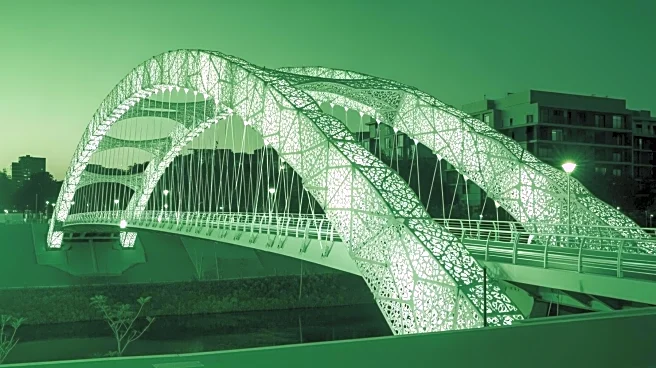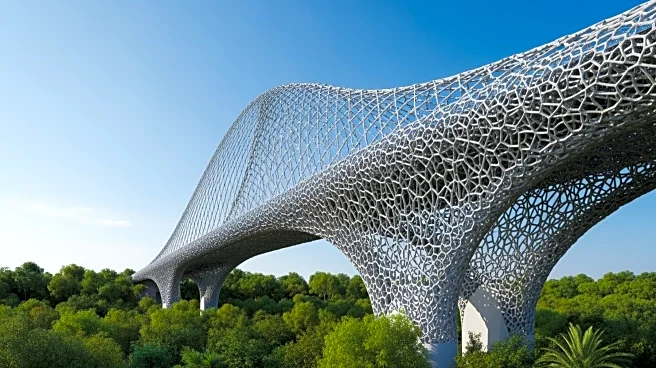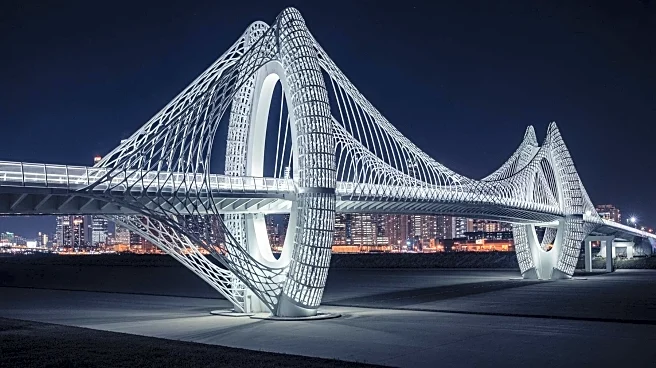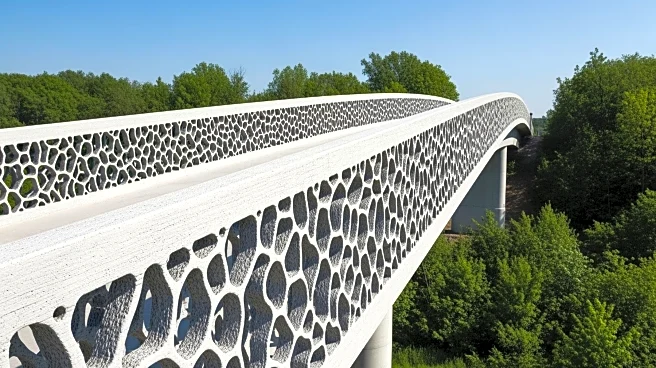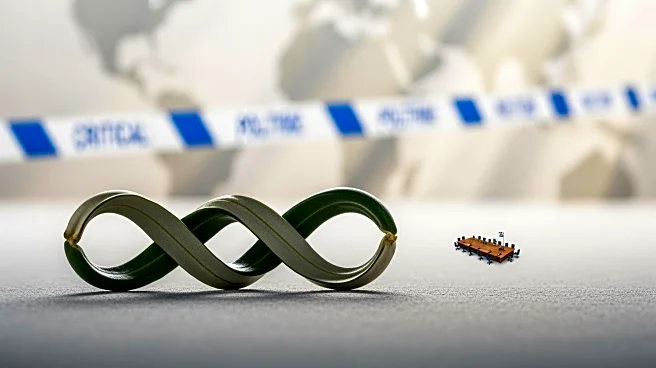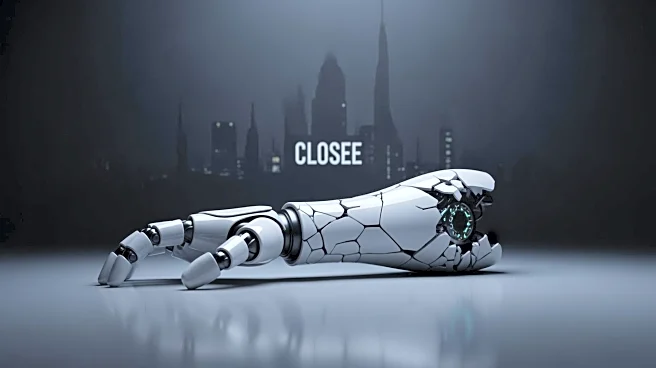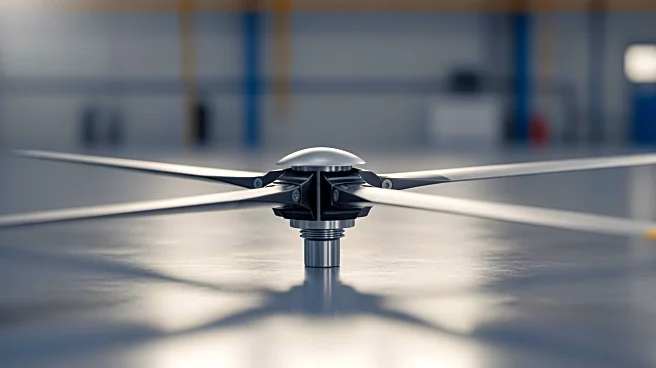What's Happening?
A research team at the University of Pennsylvania has developed a 3D-printed bridge prototype that absorbs carbon dioxide, inspired by the structure of bones. The project, named Diamanti, utilizes a sustainable
concrete mixture that absorbs significantly more carbon dioxide than conventional concrete. The bridge design uses 60% less material while maintaining strength, thanks to its lattice-like patterns. The prototype is currently on display in Venice, and the team plans to build a full-size version in France. This innovation is part of ongoing efforts to reduce the environmental impact of the concrete and cement industry, which is responsible for a substantial portion of global greenhouse emissions.
Why It's Important?
The development of the Diamanti bridge represents a significant advancement in sustainable construction practices. By reducing the carbon footprint of concrete, this project addresses one of the major contributors to global emissions. The innovative design not only minimizes material use but also enhances the carbon absorption capabilities of concrete, offering a potential solution to mitigate climate change. This could lead to broader adoption of similar technologies in the construction industry, promoting environmental sustainability and reducing reliance on traditional, emission-heavy materials.
What's Next?
The Diamanti team is preparing to construct its first full-scale bridge in France, with ongoing evaluations to monitor its performance in real-world conditions. The project may pave the way for further applications in architecture, such as prefabricated floor systems. As the construction industry seeks to reduce its environmental impact, the success of this project could inspire more research and development in sustainable building materials. Collaboration with international partners and securing additional funding will be crucial for expanding the use of this technology.
Beyond the Headlines
The Diamanti project highlights the potential for biomimicry in engineering, where natural structures inspire innovative solutions. This approach not only addresses environmental concerns but also challenges traditional construction methods, potentially leading to a paradigm shift in how buildings are designed and constructed. The integration of sustainable materials and advanced manufacturing techniques like 3D printing could redefine industry standards, promoting a more eco-friendly future.
